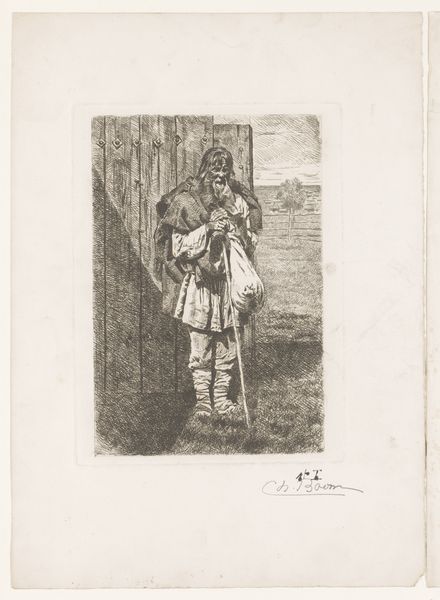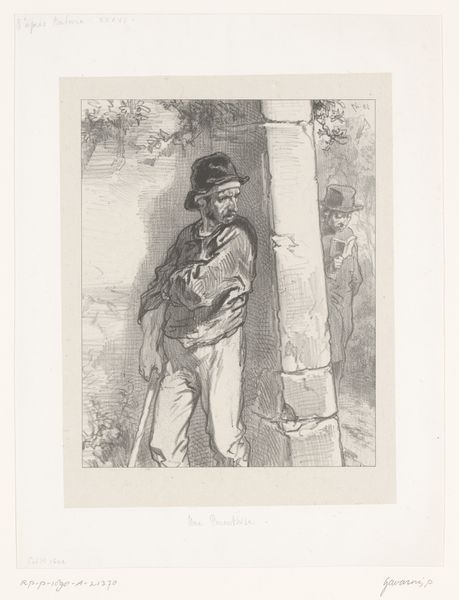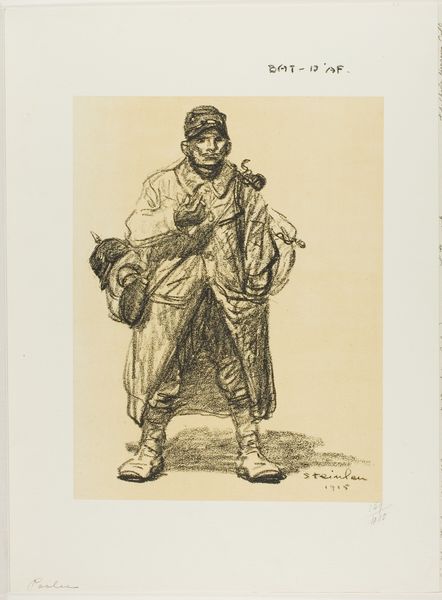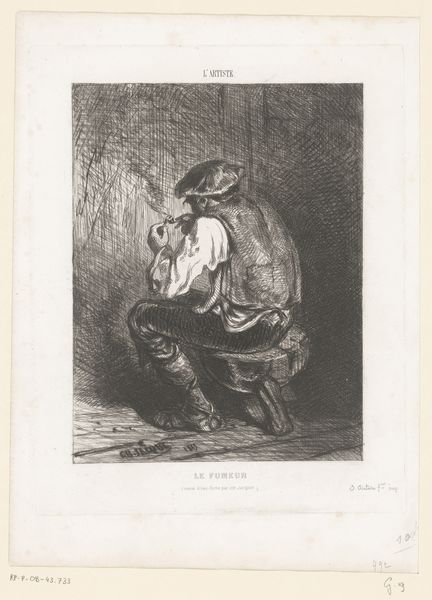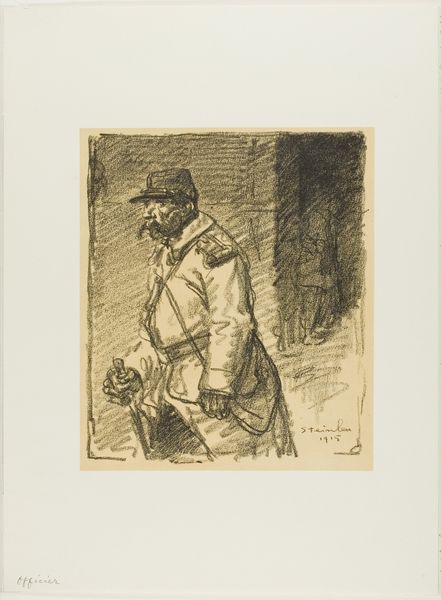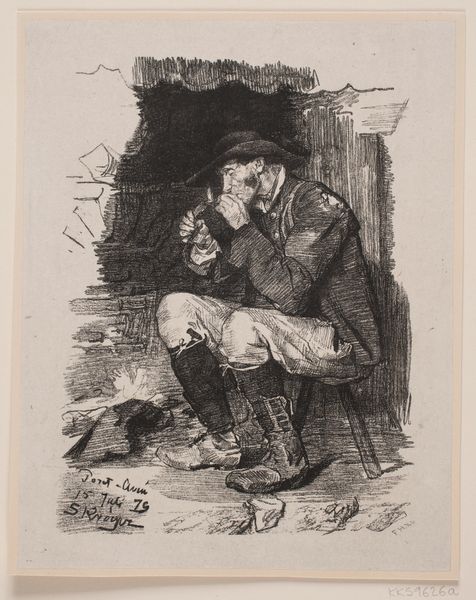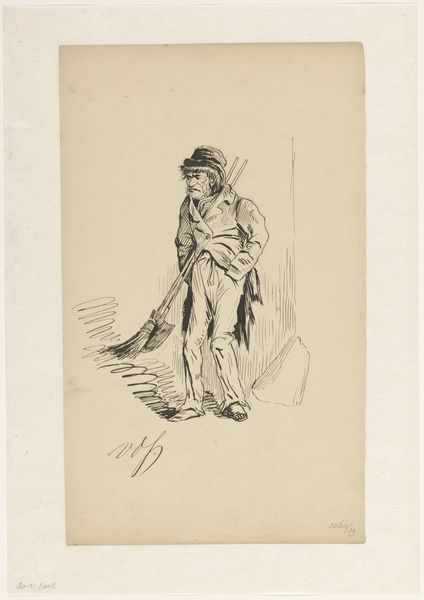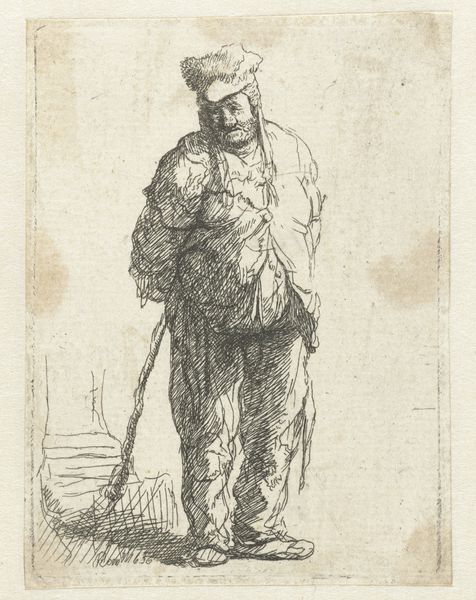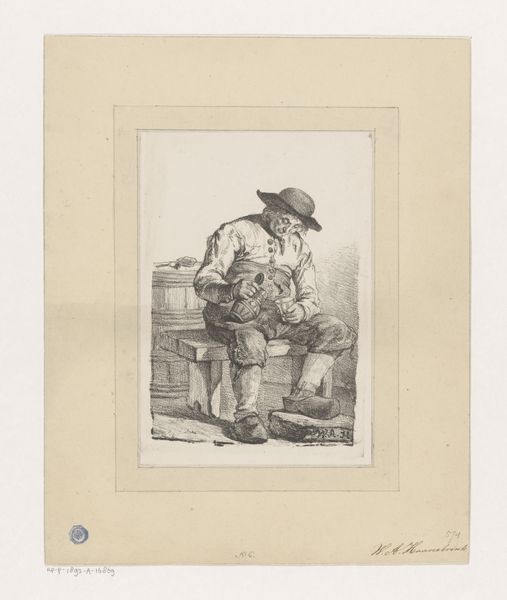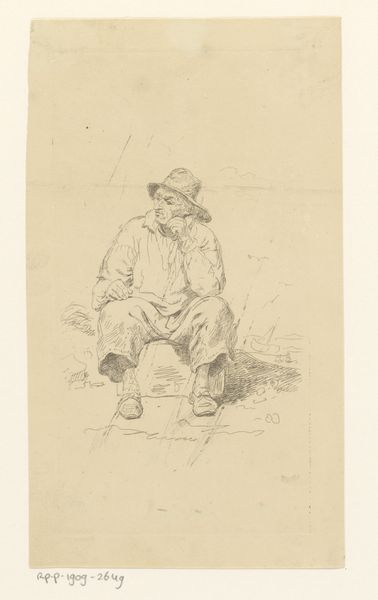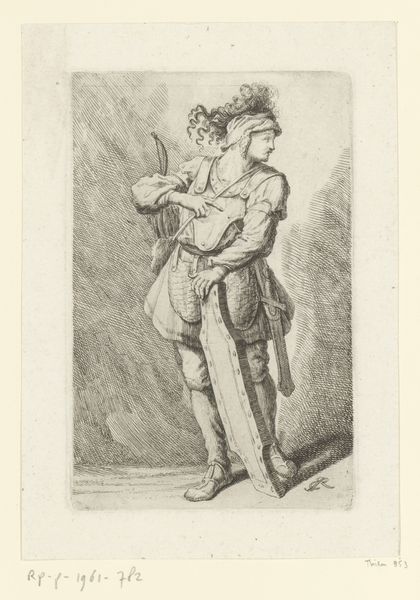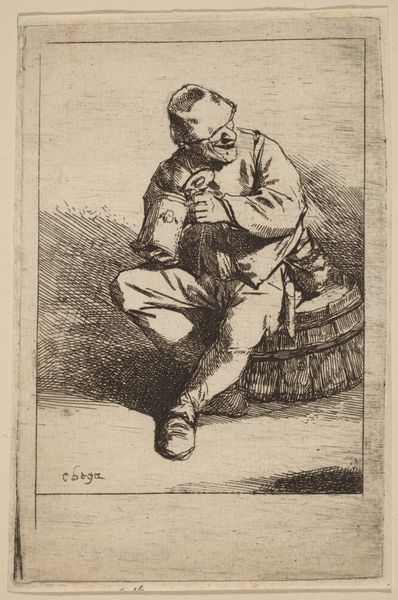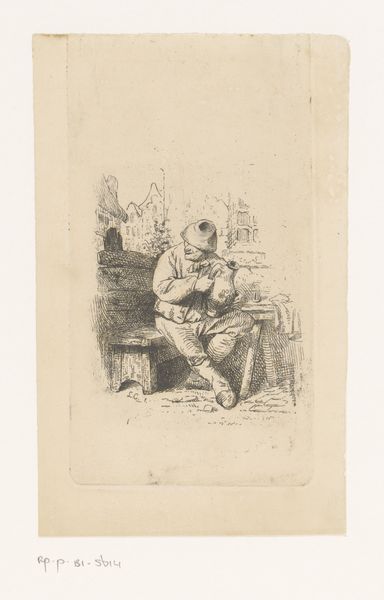
drawing, pencil
#
portrait
#
drawing
#
light pencil work
#
pencil sketch
#
old engraving style
#
personal sketchbook
#
idea generation sketch
#
ink drawing experimentation
#
pen-ink sketch
#
pencil
#
ink colored
#
sketchbook drawing
#
pencil work
#
genre-painting
#
realism
Dimensions: height 304 mm, width 250 mm
Copyright: Rijks Museum: Open Domain
Editor: This is Paul Gavarni's "Zittende oude straatveegster," created in 1852. It's a pencil drawing, and what strikes me is how realistically he captures the weariness in the woman's posture. What draws your eye when you look at it? Curator: Well, as a materialist, I immediately consider the conditions of its production and reception. This wasn't intended as high art, necessarily, but emerged from the social realities of 19th-century Paris. We see here not just a portrait, but a document of labor, represented by the street sweeper's tools. Gavarni isn't just observing, he's engaging with the socio-economic fabric. Notice how the very economy of line reflects her threadbare existence. Editor: So you're saying the cheap materials, pencil and paper, and the sketch-like quality speak to a certain accessibility, perhaps even a political statement? Curator: Precisely! Consider who might have consumed this image, perhaps as a print in a journal. It challenges the dominant narrative of the time, giving visibility to the working class. The means of production, the widespread availability of prints, democratized art and allowed for social critique to circulate more freely. How do you think that contrasts with painting of the time? Editor: It's fascinating to think about art not just as something beautiful, but as evidence of social conditions and production. Curator: Exactly. By examining the materiality and distribution, we can better understand its cultural significance. Editor: I'll definitely look at drawings differently now. I learned so much. Curator: As did I; thinking about the implications of art through a social lens offers invaluable insights.
Comments
No comments
Be the first to comment and join the conversation on the ultimate creative platform.
